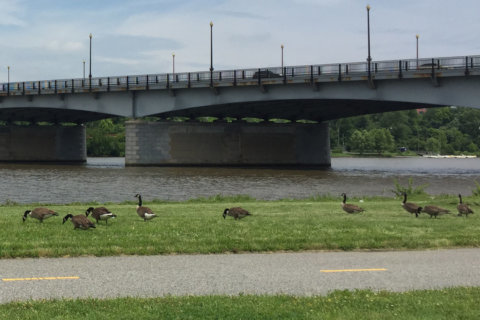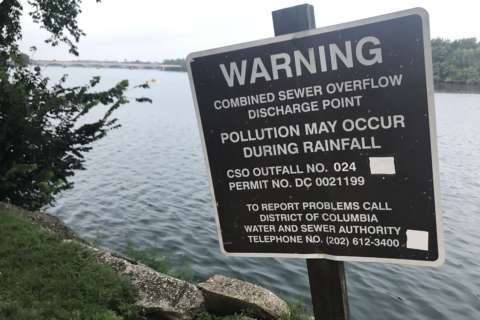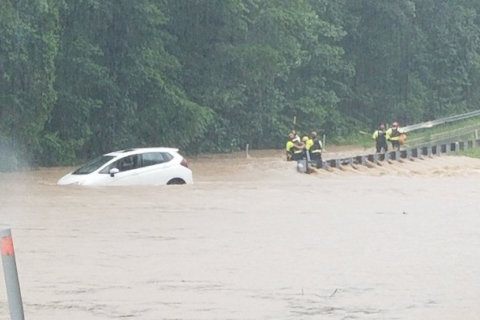D.C.’s sewer system was built in the late 1800s, and what worked then is not exactly the best way to dispose of sewage today — and definitely not ideal when a major rainstorm like the one that hit the region on Monday.
But improvements are helping DC Water adapt to the system to become more environmentally friendly, which in turn is helping the rivers that run through and around the city.
The way the sewer system was built, everything that goes down the drain or gets flushed away ultimately ends up in the same pipe as all the rain water and whatever pollutants wash down the city’s drains and gutters. When the District gets a lot of rain, rather than backing up and flooding the city’s streets, what’s called combined sewage (the mix of rain and sewage) ultimately flows into the city’s rivers and Rock Creek.
It doesn’t happen often, but torrential rains like Monday’s will overwhelm the system; it did to an extent, but not as bad as it could have been. That’s because of the Anacostia Tunnel Project that DC Water completed just over a year ago.
“The tunnel system that’s open was able to capture 170 million gallons of combined sewage that otherwise would have flowed into the Anacostia River” on Monday, said DC Water spokesman John Lisle.
That combined sewage instead was sent to the city’s wastewater treatment plant at Blue Plains. “We have a new pumping station and wet weather treatment facility at Blue Plains that’s able to treat up to 225 million gallons of additional flow every day. So that’s also helped out.”
The city has built these tunnels deep underground “that provide more capacity, expand the capacity of the existing sewer system,” said Lisle. The Anacostia Tunnel Project helped add 100 million gallons of capacity when it opened in March 2018.
Projects similar to the one that spared the Anacostia of the worst are also in the works for the Potomac River (estimated completion is 2030) and other parts of D.C. that’ll also help the Anacostia, such as the Northeast Boundary Tunnel project (which should wrap up in 2023, said Lisle). That’ll add another 90 million gallons of combined sewage capacity, which Lisle said “will prevent even more sewage from getting into the river.”
That’s good, because as well as the new tunnel system did, Monday’s enormous rains were still too much. Even with 170 million gallons of combined sewage captured, Lisle said, about 50 million gallons still made it into the Anacostia. “That’s something we would like to eliminate or practically eliminate in the coming years.”








